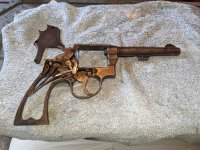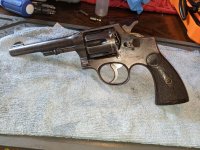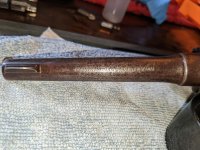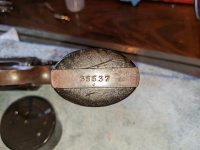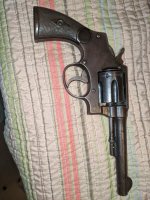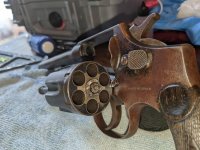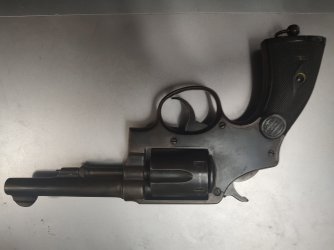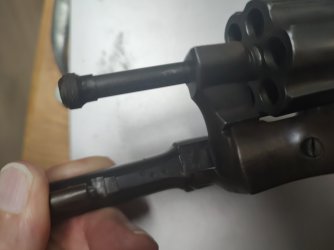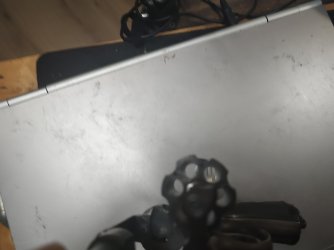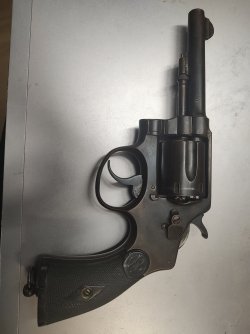Thank you for the link. It is very informative. I added my Spanish copy today. I am enjoying the thread. Thank you
You are using an out of date browser. It may not display this or other websites correctly.
You should upgrade or use an alternative browser.
You should upgrade or use an alternative browser.
Your Spanish S&W copies - let's see 'em!
- Thread starter Goony
- Start date
A very large thanks to this forum in providing the information on these S&W 38's and there Spanish copies. The posting have been very insightful and educational even when there is a disagreement about what we are all looking at. Here is my Spanish copy that I got from my father who got it from his step-father. It is a Garate Anitua Y Cia and I am not sure of the year. Enjoy the pictures and any addition information would be greatly welcomed.
Attachments
EdwardAnderson
Member
- Joined
- May 12, 2025
- Messages
- 6
- Reaction score
- 5
Here are some photos of the O/H revolver my dad left me. As you see, the only markings are numbers and the O/H rosettes on the stocks. Can anyone provide a year of manufacture?I can see how someone could get into collecting these, as it could be more interesting from a technical standpoint than just accumulating a bunch of the more common S&W's that are more alike than different. Plus, I imagine certain Spanish S&W copies are genuinely rare, both because in some instances they were made in cottage industry quantities, and also on account of their having tended to be discarded rather than repaired (lack of parts and economic incentive). Of course, there's probably no money in such a pursuit, which is why there isn't a SSWCCA.
Still, I'm surprised by the lack of response to this thread up to now. Nobody's got one of these to share, or is too embarrassed to admit to having one (or a bunch)?
Attachments
A couple years back, I'd revived this topic with a new thread: https://smith-wessonforum.com/threads/spanish-s-w-hand-ejector-copies.701606/
Here's my wife heirloom, belonged to her great grandfather, passed down via her mother. It was in a lot worse shape that you see here, I still need to do some deep cleaning. Had it looked at by a gunsmith for repairing (cylinder free spins) they quoted more than $300 to repair "if parts could be found".
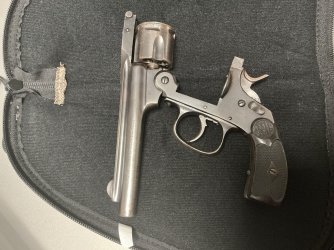
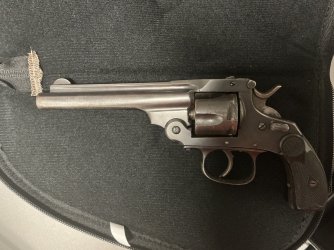

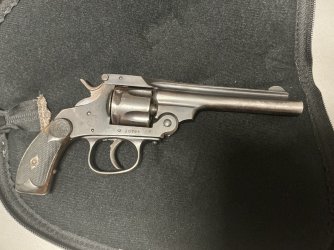




- Joined
- Aug 19, 2009
- Messages
- 1,435
- Reaction score
- 1,345
Does the cylinder lock when the trigger is held back? Most of the old guns I've seen with lock notches that style freewheel until they are fired. The locking bolt only comes up into the notch when the trigger is back and the cylinder hand is pushing the cylinder into place. Once the trigger is released the cylinder is free to turn (though the firing pin being indented into the primer will often hold it in place until the trigger is pulled again).Here's my wife heirloom, belonged to her great grandfather, passed down via her mother. It was in a lot worse shape that you see here, I still need to do some deep cleaning. Had it looked at by a gunsmith for repairing (cylinder free spins) they quoted more than $300 to repair "if parts could be found".
View attachment 768379View attachment 768380View attachment 768381View attachment 768382
Not 100% sure. The gunsmith said it was "broke" and needed parts. Haven't done much with it since that assessment.Does the cylinder lock when the trigger is held back? Most of the old guns I've seen with lock notches that style freewheel until they are fired. The locking bolt only comes up into the notch when the trigger is back and the cylinder hand is pushing the cylinder into place. Once the trigger is released the cylinder is free to turn (though the firing pin being indented into the primer will often hold it in place until the trigger is pulled again).
Similar threads
- Replies
- 26
- Views
- 3K
- Replies
- 11
- Views
- 3K
- Replies
- 30
- Views
- 18K

